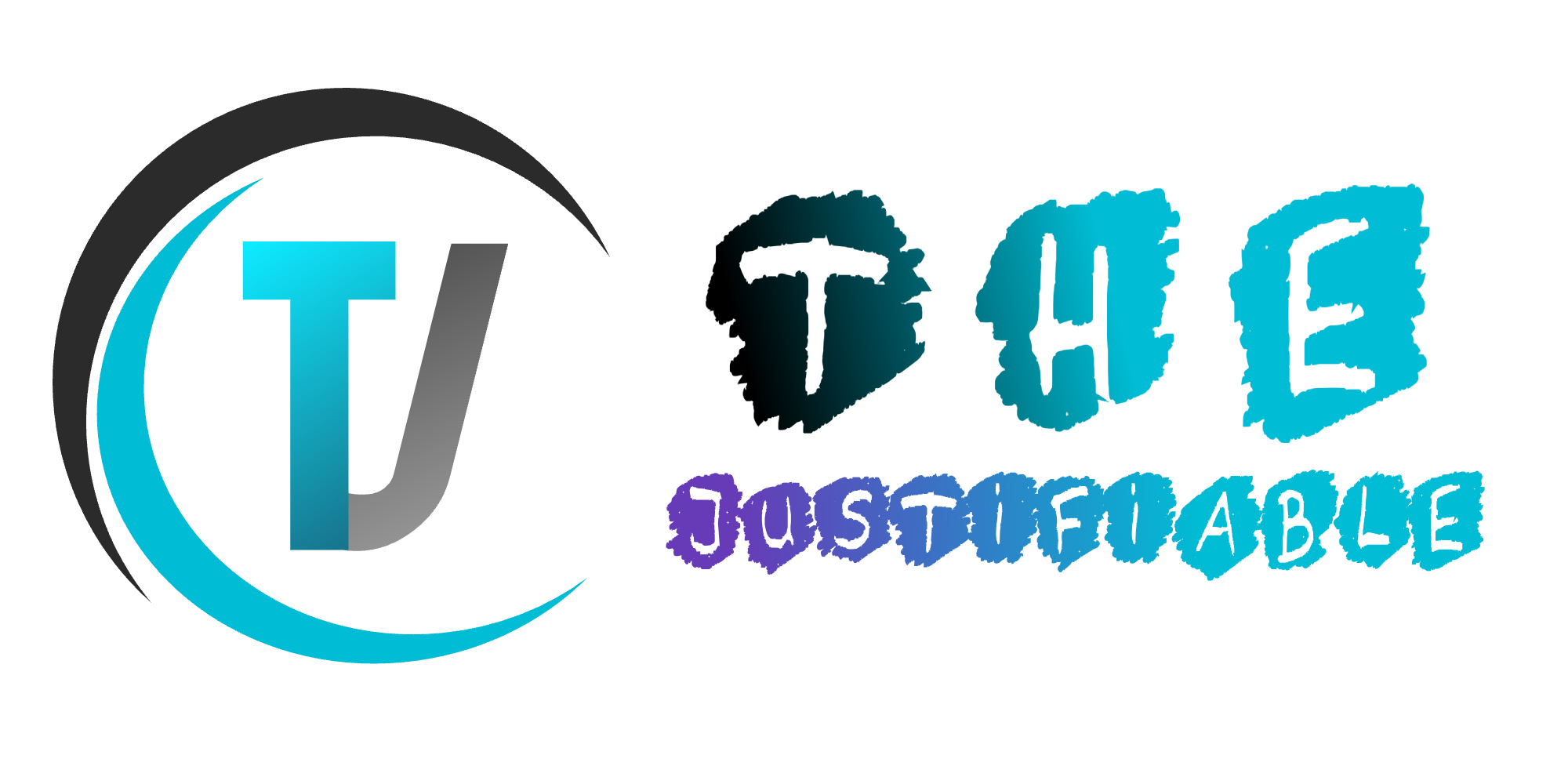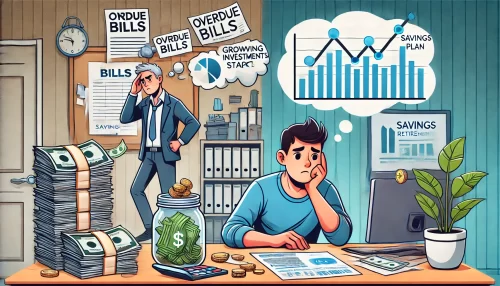Table of Contents
Learning finance doesn’t have to feel overwhelming or reserved for experts with spreadsheets and Wall Street jargon. Have you ever wondered how to make smarter money choices, where to start when building a budget, or how investing actually works?
This guide will walk you step by step through the basics of finance so you can confidently manage your money and set yourself up for long-term success.
Understanding The Basics Of Learning Finance
Before you can make smart money moves, you need to understand the language of money. Finance can feel intimidating, but once you get comfortable with the basics, you’ll see that it’s just a set of tools for making better life decisions.
Why Knowing The Language Of Money Matters
Think about learning finance like learning a new language. If you don’t understand words like “interest rate” or “liability,” it’s like trying to play a game without knowing the rules. For example, not knowing what “APR” means can make you sign up for a credit card with high hidden costs.
I believe the real benefit of learning financial terms isn’t just so you can sound smart—it’s so you can spot opportunities and avoid traps.
Money touches every part of life: your job, your home, even your daily coffee habit. The more you understand the language of money, the more control you have over where your dollars go.
Here’s a simple example: if you know the difference between “gross income” (your pay before taxes) and “net income” (the money that actually hits your account), you’re already ahead of most people who overspend because they think they earn more than they do.
Key Financial Terms Every Beginner Should Learn
Let me break down some of the most common terms you’ll run into when learning finance:
- Budget: A spending plan for your money. Think of it as a map that shows where your money should go instead of wondering where it went.
- Credit Score: A number that represents how trustworthy you are to lenders. Higher is better.
- Interest: The cost of borrowing money (when you owe) or the reward for lending/investing (when you save).
- Net Worth: What you own (assets) minus what you owe (liabilities).
- Liquidity: How quickly you can turn something into cash without losing value.
When I started, I wrote these terms down on sticky notes and kept them near my desk. Within a few weeks, they felt like second nature. That’s the point—get so comfortable with the words that they stop feeling scary.
Breaking Down The Difference Between Assets And Liabilities
This one’s a game changer. Assets are things that put money in your pocket, while liabilities take money out. A house can be both: if it’s your home, it’s a liability (mortgage, taxes, repairs). But if you rent it out and it earns more than it costs, it becomes an asset.
Here’s a quick comparison table to keep it crystal clear:
| Assets | Liabilities |
| Cash, savings accounts | Credit card debt |
| Investments (stocks, bonds) | Student loans |
| Rental property generating cash | Car loans |
| Business ownership | Mortgage on your home (personal) |
I suggest you ask yourself: every time you buy something big, is this adding money to my life or draining it? That single shift in thinking is what separates financial growth from financial stress.
How To Build A Budget That Actually Works
A budget isn’t about cutting out everything fun. It’s about making sure your money works the way you want it to. Think of it like giving your dollars a job so they don’t wander off aimlessly.
Step-By-Step Approach To Tracking Income And Expenses
Start simple. Grab a notebook, a spreadsheet, or an app—it doesn’t matter. Here’s how I usually break it down:
- Write down your income: List your paycheck, side hustles, or any consistent money coming in.
- Track your fixed expenses: Rent, utilities, car payments—anything that stays the same every month.
- Track variable expenses: Groceries, gas, eating out, subscriptions.
- Compare totals: If expenses are bigger than income, you’ve got a gap to close.
I once worked with someone who thought they were “bad with money.” When we tracked everything, it turned out they were spending $300 a month on food delivery. Just seeing it on paper gave them the power to change.
The 50/30/20 Rule And How To Use It
This is my favorite rule of thumb because it’s so simple:
- 50% of income → Needs (rent, food, bills)
- 30% of income → Wants (dining out, hobbies, travel)
- 20% of income → Savings and debt payoff
Here’s the beauty: it’s flexible. If your rent is high, maybe your needs hit 60%. That’s okay—just adjust your wants. The goal isn’t perfection, it’s awareness and control.
Think of the 50/30/20 rule as “training wheels” for your budget. It gives you a clear structure without feeling restrictive.
Simple Budgeting Tools And Apps For Beginners
If you prefer tech over pen and paper, budgeting apps can make life easier. Some popular ones I’ve used include:
- Mint: Great for tracking spending and setting budget categories.
- YNAB (You Need A Budget): Teaches you to “give every dollar a job.”
- EveryDollar: Super clean interface for zero-based budgeting.
What I love about these tools is the automation. They pull transactions directly from your bank so you don’t have to manually log every coffee. My tip: start with Mint because it’s free, then graduate to YNAB if you want to get more hands-on.
Managing Debt Without Feeling Overwhelmed
Debt is the financial elephant in the room for most people. The key isn’t shame—it’s strategy. You don’t have to tackle it all at once. You just need a plan.
Understanding The True Cost Of Debt And Interest
Let’s say you owe $1,000 on a credit card with a 20% interest rate. If you only pay the minimum each month (around $25), it could take you more than four years to pay it off and cost you nearly $500 extra in interest. That’s money for nothing—just for waiting.
Debt is expensive because of compound interest working against you. The longer you wait, the more it grows. I advise treating high-interest debt like your financial emergency room—address it before everything else.
Effective Strategies To Pay Down Credit Cards And Loans
There are two classic strategies I recommend:
- Debt Snowball: Pay off the smallest balance first. Once it’s gone, roll that payment into the next one. Builds motivation fast.
- Debt Avalanche: Pay off the highest interest debt first. Saves the most money in the long run.
I usually suggest starting with the snowball if motivation is your struggle, and avalanche if math is your driver. Either way, automate payments so you never miss one.
One trick I’ve used personally is setting up a separate checking account just for debt payments. That way, money is earmarked before I can touch it for anything else.
How To Avoid Common Debt Traps Beginners Fall Into
Some traps are obvious, like payday loans, but others sneak up on you:
- Credit card minimum payments: They make it look affordable, but they trap you for years.
- “Buy now, pay later” offers: Interest kicks in if you’re late even once.
- Car leases: Sounds cheaper than buying, but you’re paying for the most expensive years of a car’s life.
My advice? Before taking on debt, ask: “What’s the real total cost over time?” A $1,500 sofa with a “low monthly payment” can turn into $2,000+ once interest is factored in.
Saving Money With A Clear And Practical Plan
Saving money isn’t about deprivation; it’s about creating freedom and peace of mind. When you start learning finance, savings become the foundation that lets you take risks, weather emergencies, and build wealth.
Why An Emergency Fund Should Be Your First Goal
Imagine your car breaks down tomorrow, and the repair bill is $1,200. If you don’t have savings, that probably goes straight on a credit card—and now you’re paying interest on top of the repair. An emergency fund keeps life’s surprises from turning into financial disasters.
I recommend starting with at least $500 as a mini goal. Then work your way toward three to six months of living expenses. That may sound huge, but break it down: if your monthly costs are $2,000, your safety net should be between $6,000 and $12,000.
Here’s a quick chart to show what that looks like:
| Monthly Expenses | Emergency Fund Goal |
| $1,500 | $4,500 – $9,000 |
| $2,000 | $6,000 – $12,000 |
| $3,000 | $9,000 – $18,000 |
The smartest way to start is small—every time you get paid, tuck away a set amount before you touch anything else. Think of it as paying your future self first.
Smart Ways To Automate Savings Every Month
The less you have to think about saving, the better. Automation takes away the temptation to spend first and save later.
Here are three simple methods I’ve used:
- Automatic Transfers: Most banks let you schedule a transfer from checking to savings the day after payday. For example, set $100 to move every two weeks.
- Round-Up Savings Apps: Tools like Acorns round up your purchases and save the difference. Buy a $3.50 coffee, and 50 cents slides into savings.
- Direct Deposit Splits: If your employer allows it, send part of your paycheck straight to savings before it even hits your main account.
I believe automation works because it removes willpower from the equation. You don’t need to make a choice each time—it just happens in the background.
How To Separate Short-Term And Long-Term Savings Goals
Not all savings are created equal. A vacation fund shouldn’t sit in the same account as your emergency cushion.
Here’s how I like to separate them:
- Short-term (1–3 years): Vacations, new laptop, holiday gifts. Keep this in a high-yield savings account for easy access.
- Medium-term (3–7 years): Home down payment, wedding, or starting a business. Consider a certificate of deposit (CD) or a money market account.
- Long-term (7+ years): Retirement, kids’ college funds. This is where investing comes in (we’ll get to that soon).
Pro tip: Many online banks let you create “buckets” or sub-accounts. Label one “Emergency,” another “Vacation,” another “Car Fund.” That way, you can track progress toward multiple goals without confusion.
Learning Finance Through Smart Investing Basics
Once you’ve built a savings foundation, investing is how your money starts working for you. Learning finance isn’t complete without understanding how to grow wealth beyond just saving.
The Power Of Compound Interest Explained Simply
Compound interest is the secret engine of wealth. It means you earn interest not only on your original money but also on the interest that money has already made.
Example: If you invest $1,000 at 8% annual return:
- After 1 year → $1,080
- After 5 years → $1,469
- After 20 years → $4,661
- After 40 years → $21,724
Notice how the curve bends upward over time? That’s why I suggest starting as early as possible. Even small amounts can snowball into something life-changing if you give it enough time.
Differences Between Stocks, Bonds, And Index Funds
Here’s the simplest way I explain it:
| Investment Type | What It Is | Risk Level | Potential Reward |
| Stocks | Ownership in a company | High | High |
| Bonds | Loan to a company/government | Low–Medium | Lower |
| Index Funds | A bundle of many stocks/bonds | Medium | Solid & Steady |
- Stocks: Can skyrocket (think Apple or Tesla) but also crash. Best for long-term growth.
- Bonds: Steadier, with fixed interest payments. Good for stability.
- Index Funds: My favorite beginner option because they spread risk across many companies.
I advise most beginners to start with index funds (like S&P 500 funds). They require less knowledge about picking winners and still let you ride the overall growth of the market.
How To Start Investing With Small Amounts Of Money
The myth is you need thousands to invest. Not true. Today, you can start with as little as $5.
Practical options include:
- Brokerage Apps: Robinhood, Fidelity, or Vanguard let you buy fractional shares (meaning you can own $10 of Amazon stock instead of $3,000).
- Robo-Advisors: Platforms like Betterment or Wealthfront automatically invest your money into diversified portfolios. Great if you want hands-off investing.
- Retirement Accounts: Contribute to a 401(k) if your employer offers one, especially if they match contributions—that’s free money.
Here’s my tip: start with automatic contributions, even if it’s $25 a month. The habit matters more than the amount at the beginning. Over time, you can increase it as your income grows.
Understanding Credit And Building It Wisely
Credit can either be your best financial tool or your worst enemy. When you’re learning finance, understanding how credit works is crucial because it affects everything from renting an apartment to buying a home.
How Your Credit Score Really Works
Your credit score is basically a trust score for lenders. It ranges from 300 to 850, and the higher, the better. Here’s what goes into it:
- Payment History (35%): Do you pay bills on time?
- Credit Utilization (30%): How much of your available credit you’re using (under 30% is ideal).
- Length of Credit History (15%): Older accounts help more.
- Credit Mix (10%): Variety matters (credit cards, loans, mortgage).
- New Credit Inquiries (10%): Too many applications lower your score.
For example, if you have a $1,000 credit limit and carry a $700 balance, that’s 70% utilization—it signals risk and can drag your score down.
Steps To Build Or Rebuild A Strong Credit History
If your credit is low, don’t panic. It can be repaired with consistent effort. Here’s a simple plan:
- Pay bills on time, always. Even one late payment can hurt.
- Keep balances low. Aim for under 30% utilization, ideally under 10%.
- Become an authorized user. Ask a family member with good credit to add you to their card.
- Use a secured credit card. Deposit $200–$500, and use it responsibly to build history.
- Check your credit reports. Free once a year at annualcreditreport.com. Fix errors if you see them.
I’ve seen people raise their score 100 points in under a year with these simple steps. Consistency is the magic ingredient.
Mistakes That Can Damage Your Credit Score Quickly
Here are some traps that can undo months of progress:
- Missing payments: Even one can stick on your record for seven years.
- Maxing out cards: High utilization screams risk.
- Closing old accounts: Shortens your credit history.
- Applying for too many cards at once: Multiple “hard inquiries” make lenders nervous.
Think of your credit score like a reputation. It takes time to build but can be wrecked in a moment.
My advice: treat it with care, because a strong credit score saves you thousands in lower interest rates over your lifetime.
Planning For The Future With Retirement Accounts
Retirement may feel far away, but the truth is that planning for it now gives you freedom later. Even small contributions today can grow into something powerful over time.
Why Starting Early With Retirement Savings Pays Off
The earlier you start, the less you have to contribute to end up with the same nest egg. That’s compound interest doing the heavy lifting for you.
Here’s a simple example:
- Start at 25: Contribute $200/month until age 65 at 7% return → about $500,000.
- Start at 35: Same $200/month → about $250,000.
The difference? A ten-year head start nearly doubles your retirement savings. I suggest you think of retirement contributions as planting a money tree—the sooner you plant, the taller it grows.
Beginner-Friendly Options Like 401(k) And IRAs
Two of the most common retirement tools are:
- 401(k): Employer-sponsored plan. Many employers match contributions (for example, you put in 4%, they add 4%). That’s free money you don’t want to leave on the table.
- IRA (Individual Retirement Account): You open this yourself. Comes in two flavors:
- Traditional IRA: Contributions are tax-deductible now, taxed when withdrawn.
- Roth IRA: Contributions are after-tax, but withdrawals in retirement are tax-free.
If you have access to a 401(k) with matching, I advise starting there. Once you hit the match, you can add an IRA to diversify tax benefits.
How To Choose The Right Retirement Plan For You
Choosing depends on your situation:
- Have an employer match? Grab the 401(k).
- Expect higher taxes later in life? A Roth IRA might save you thousands.
- Want flexibility? IRAs give you more investment options than many 401(k) plans.
My advice: don’t overthink it at the beginning. Just start. You can always adjust your mix as your income and life evolve.
Protecting Your Finances With Insurance Basics
Insurance is often overlooked in learning finance, but it’s what keeps your financial house from collapsing when life throws curveballs.
Why Insurance Matters For Financial Security
Imagine working hard for years, building savings, and then one medical emergency wipes it all out. Insurance transfers that risk away from you.
I see it as a financial seatbelt—you hope you never need it, but you’ll be grateful if you do.
Understanding Health, Life, And Auto Insurance
Let’s break down the big three most people deal with:
- Health Insurance: Covers doctor visits, hospital stays, prescriptions. Even with premiums, it saves you from six-figure medical bills.
- Life Insurance: If others depend on your income, term life insurance ensures they’re taken care of if something happens to you.
- Auto Insurance: Required by law in most places. Protects you financially if you cause an accident or your car is damaged.
A personal example: I once skipped dental insurance, thinking I’d save money. One root canal later, I paid more than five years of premiums in one shot. Lesson learned—coverage matters.
How To Decide What Coverage You Actually Need
Not everyone needs every type of insurance. Here’s a simple framework:
- Single, no kids? Focus on health and auto. Life insurance may not be necessary yet.
- Family to support? Term life is essential.
- Own a home? Homeowners insurance is non-negotiable.
- High income potential? Consider disability insurance—it replaces income if you can’t work.
I suggest looking at the biggest risks in your life. Ask: “What would financially devastate me if it happened tomorrow?” That’s what you insure against.
Building Confidence Through Financial Education
Learning finance doesn’t stop with the basics. Confidence comes from ongoing education and applying what you learn in your own life.
Free Resources To Keep Learning Finance Every Day
There’s no shortage of tools out there—you don’t have to spend money to learn how to manage it better.
- Websites and Blogs: NerdWallet, Investopedia (great for quick definitions).
- YouTube Channels: Some break down investing or budgeting with visuals that make it easier to understand.
- Bank Tools: Many banks now offer free credit score trackers and financial literacy modules in their apps.
I recommend dedicating 10 minutes a day to reading or watching something finance-related. That’s like a mini workout for your money brain.
The Role Of Books, Podcasts, And Online Courses
Books often provide depth, while podcasts fit into your commute or gym time. Courses give structure.
- Books: I love “The Total Money Makeover” for budgeting and “The Simple Path to Wealth” for investing.
- Podcasts: Look for ones that mix personal stories with practical tips—it makes the learning stick.
- Courses: Platforms like Coursera or Udemy often have affordable finance courses designed for beginners.
My tip: don’t just consume passively. Take notes, highlight sections, and challenge yourself to apply one concept each week.
How To Apply Lessons Learned To Real-Life Money Decisions
Learning is only half the game. Application is where growth happens. For example, if you learn about the 50/30/20 budget rule, test it for a month. See how it feels.
Here’s a little system I use:
- Learn one new financial principle.
- Apply it to a real decision (budget tweak, investment choice, insurance review).
- Reflect after 30 days—did it help or not?
This cycle keeps you moving forward while building confidence in your decision-making.
Creating A Step-By-Step Action Plan For Success
It’s easy to get overwhelmed with so many money tips. The solution is to simplify things into an action plan you can actually follow.
Setting Realistic Financial Goals That Motivate You
Instead of vague goals like “I want to save more,” set clear ones:
- Save $1,000 in three months for an emergency fund.
- Pay off one credit card in six months.
- Invest $50/month into an index fund.
Clear goals keep you motivated because you can track progress. I suggest writing them down somewhere you’ll see daily—like on your phone lock screen.
Turning Daily Habits Into Long-Term Financial Growth
Money mastery is less about big leaps and more about small, consistent habits. Some examples:
- Make coffee at home 3 days a week → save $50/month.
- Set a $20 weekly auto-transfer into savings → $1,000+ a year.
- Review your budget every Sunday evening → keeps you accountable.
These little habits stack up. Ten years later, you’ll be amazed at the difference.
How To Review And Adjust Your Plan As Life Changes
Life doesn’t stay the same—neither should your financial plan. Maybe you get a new job, have kids, or move cities. Revisit your plan at least twice a year.
Ask yourself:
- Are my goals still the same?
- Has my income or expenses shifted?
- Do I need to adjust my savings or investments?
I treat it like a doctor’s check-up for my finances—preventative care beats waiting for a crisis.
Pro Tip To Take Away
Don’t aim for perfection. Aim for progress. When learning finance, the biggest wins come from steady, consistent action.
Even if you only save $50 this month or make one extra debt payment, that’s momentum. Over time, those small steps compound just like your investments will.






